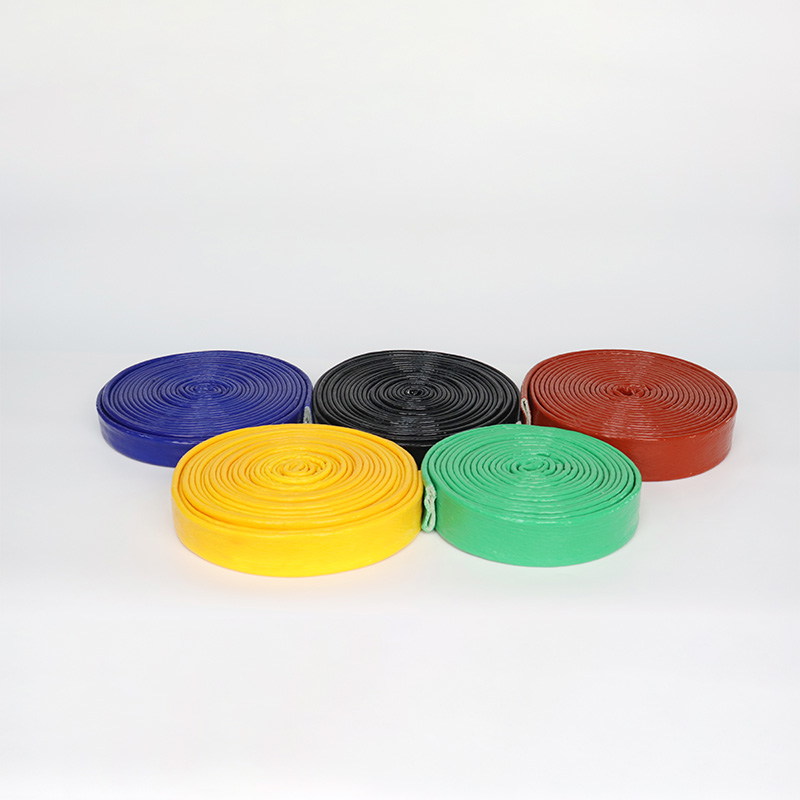Why Are Custom Fire Sleeves Essential for Industrial Safety?
In the unforgiving landscapes of heavy industry—steel mills, glass factories, and petrochemical plants—intense heat, open flames, and molten metal splashes are not just possibilities; they are daily realities. Within these hostile environments, the critical lifelines of production—hydraulic hoses, power cables, and fluid lines—are in constant peril. Their failure can lead to catastrophic consequences, ranging from production downtime and severe equipment damage to grave threats to personnel safety. It is in this context that the fire retardant sleeve emerges as a crucial piece of safety equipment, a robust guardian engineered specifically to shield these vital conduits from extreme thermal and physical assaults. This specialized protective material acts as an unyielding barrier, ensuring the integrity of internal lines and significantly mitigating the risk of accidents. Its advent marks a significant leap forward in safety technology for extreme conditions, providing a foundation for uninterrupted and secure industrial operations.
More Than Just Insulation: The Multifunctional Design of a Single Sleeve
The fire retardant sleeve is far from a simple heat shield; it is a sophisticated solution that integrates multiple advanced materials to deliver comprehensive protection. Its core is typically woven from high-strength, alkali-free glass fiber or a high-bulk fiber, providing exceptional tensile strength and resistance to tearing. This robust inner structure is then meticulously coated with a layer of high-quality, high-temperature organic silicon gel. This special coating serves a dual purpose: it not only gives the sleeve its distinctive vibrant color but, more importantly, forms a dense protective membrane when exposed to high heat, effectively warding off molten metal splashes. The superior thermal insulating properties of the silicon gel also maintain the internal temperature of the sleeve within a safe range. Furthermore, this material synergy provides exceptional electrical insulation, acting as an additional safety layer to prevent electrical faults and potential fires caused by short circuits or leakage, thereby bolstering the safety of complex electrical systems.

A Fortress Against Molten Metal and Corrosive Chemicals
In the heart of a blast furnace, where molten iron and hot sparks fly, the risk to nearby hoses and cables is immense. The fire retardant sleeve, designed for precisely these conditions, is the ultimate defense against such threats. Its outer silicon coating is engineered to withstand direct exposure to molten metal splashes reaching up to 1650°C (3000°F), preventing the immediate burnout of the internal conduits. Similarly, in the chemical and petrochemical sectors, where equipment and pipelines are constantly exposed to potent acids, alkalis, and other corrosive agents, conventional protective materials would quickly degrade. The unique chemical composition of the fire sleeve, however, enables it to resist a wide range of corrosive attacks, ensuring its structural integrity and protective performance remain uncompromised even during prolonged use in harsh conditions. This resilience not only safeguards the equipment but also significantly extends its service life, reducing the need for frequent maintenance and replacement.
The Unsung Hero of Energy Efficiency
Beyond its primary role as a protective barrier, the fire retardant sleeve also functions as an unsung hero in energy conservation. Its exceptional thermal insulation properties effectively minimize the heat loss from internal fluids, such as hydraulic oil or steam, to the surrounding environment. In hydraulic systems, this helps maintain the optimal working viscosity of the oil, preventing overheating. For steam lines, it reduces energy wastage, significantly improving the overall efficiency of energy utilization. By reducing heat transfer, the sleeve not only lowers the ambient temperature of the workspace, creating safer and more comfortable conditions, but more critically, it reduces the energy required to sustain operational temperatures. This advanced thermal management leads to substantial energy savings, enhancing the overall efficiency of the system and delivering tangible economic benefits to the business.
Tailored for Purpose: The Art of Customized Protection
Different industries face unique challenges, necessitating specific protective solutions. Rail transit cables, for example, require resistance to constant vibration and abrasion while meeting stringent fire safety standards. Cables in a glass factory near a furnace must endure continuous high-temperature exposure. Large-scale transformer stations demand enhanced insulation and flame retardant properties. A one-size-fits-all approach is simply inadequate for these specialized requirements. Consequently, fire retardant sleeves are available in a variety of specifications, material formulations, and thicknesses, and can even be customized to meet a client’s precise application needs. For a hose that undergoes frequent bending, a more flexible weave pattern can be chosen. For environments with specific chemical corrosion risks, the silicon coating formulation can be adjusted accordingly. This philosophy of tailored design ensures that each protective solution is perfectly matched to its intended application, providing the most reliable and effective safeguard for every unique scenario.
